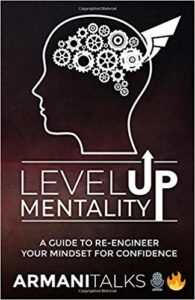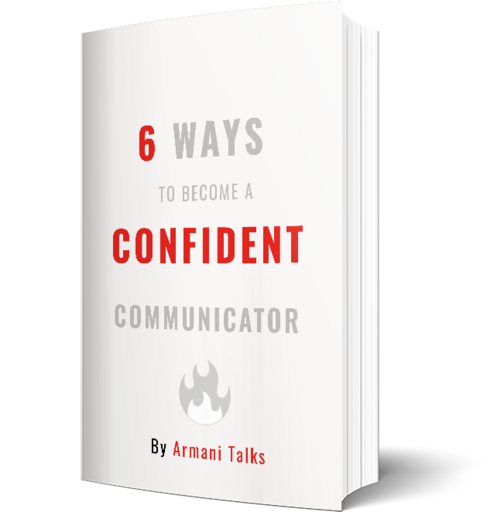6 Story Conflicts to Leverage in Your Stories
The conflict is the cream to the Oreo.
Without the cream, the Oreo is disgusting.
Without the conflict, the story is bland.
With storytelling, we need pleasure and pain.
- The hero is having a good day.
- The hero is suddenly having a bad day.
- From there, the hero begins having a good day again or learns a lesson from having a bad day.
With storytelling conflicts, it doesn’t always have to be an antagonist that is holding the protagonist back.
We have more options.
As a storyteller, we need to get creative.
In this article, you will learn 6 common/uncommon types of storytelling conflicts.
See if one of these will bring light to your story.
Let’s start with the most obvious one.
1. The Antagonist
The antagonist is a villain.
The villain is someone that is holding the character back.
In Harry Potter, the antagonist was Voldemort.
Voldemort was trying to somehow hold Harry Potter back.
And boom, that’s how the franchise was born.
Sometimes, spotting the antagonist can be tricky.
One example is professional wrestling.
At a certain point, Stone Cold was meant to be a heel.
However, he was loved by the audience.
On the flip side, when The Rock was first starting his wrestling career…
He was supposed to be a babyface, aka the good guy.
But he would get booed off the stage.
Don’t be surprised if some people like the antagonist more than the protagonist.
2. Internal Conflict
Humans have problems.
The problems range from:
- Anxiety.
- Unpaid bills.
- Physical pain.
- Missed Deadlines.
Etc.
All these problems lead to an internal narrative.
The storyteller feels happy when their character feels down.
Joshua is great in so many parts of life.
He is able to get things up and running.
But when it’s finally time to seal the deal, he ends up sabotaging the entire deal.
Joshua is Joshua’s number 1 enemy.
Why?
In the hip-hop space, there is a rapper turned podcast host named Joe Budden.
He is very entertaining.
However, his main Achilles heel is that he consistently sabotages his own projects.
Whenever he gets something up and running, the hip hop critics are like:
‘Just wait. Eventually, Joe will sabotage everything.’
And routinely, the critics are right.
What is the narrative that causes Joe to behave the way that he does?
Answering that question will lead to a ton of creative breakthroughs.
3. Natural Disasters
A lot of popular story conflicts come down to problems with:
- Human nature.
- Mother nature.
An example of a problem with human nature is jealousy.
An example of a problem with mother nature is a tsunami.
Leverage real life to play into this conflict.
- When was the last time you were involved in a natural disaster?
- When was the last time you saw someone involved in a natural disaster?
4. Time
A sleeper conflict is time.
- The protagonist doesn’t have enough time to get something done.
This trait is the essence of all suspense novels.
The author of the Da Vinci Code, Dan Brown, loves to play with time.
He introduces a conflict with the clock ticking down.
If the protagonist cannot solve the puzzle before the clock runs out, then a lot of people will die.
Another version of playing with time is when a character is taken back to the past, and the time machine breaks.
Now what?
5. Changes In Society
Ted Turner was a media mogul in the 80s and 90s.
He knew how to leverage radio, billboards, and television.
However, later in his career, the internet was becoming a threat.
Ted didn’t think much of the internet.
He thought it would just be a fad.
But the internet was growing stronger with time.
Media created on the internet is known as new media.
New media slowly began to take away the market share of traditional media.
Slowly, the power of Ted’s empire began crumbling.
Rather than adjusting, Ted was stuck in his old ways.
He didn’t want to take time to learn the new technology.
He was blindsided when the internet problem was not going away.
New media was here to stay.
This is a conflict that represents changes in time and environment.
The inability of the protagonist to deal with the change determines the depth of the turmoil.
6. Blending the Conflicts
Combining conflicts is a multidimensional approach to storytelling.
Example:
- There is a natural disaster headed towards the protagonist’s way.
- And the protagonist is having limiting beliefs on how to deal with the natural disaster.
- He was able to deal with an issue like this before.
- But due to changes in technology, he is having limiting beliefs.
As you can tell, a lot of conflicts are presented in this scenario:
- Natural disaster.
- Internal conflict.
- Inability to evolve with the times.
The purpose of a storyteller is to willingly introduce change.
That’s what the conflict is meant to do.
Build Baby Story Conflicts, then Expand
With storytelling, it’s best to start off light, then expand.
Starting off too complex is like trying to do long division before simple division.
All you get is confusion.
Start off simple and and learn basic division first.
When you learn basic division first, long division takes care of itself.
So, try writing a short story.
Or tell a 1-minute story.
Use one of the conflicts mentioned in this article in that story.
That’s when you will see how a conflict is just like the creme to an Oreo.
In the storytelling world, you get rewarded for breaking things.
So be bold and break things!
If you want more practical tips to improve your storytelling skills, be sure to check out:
- The Art & Science of Storytelling: Learn How to Tell Better Stories in Conversations, Business Communication, Leadership & Brand Building
In this book, you will learn more about:
- Leveraging pain and pleasure.
- Building universes.
- Designing powerful story conflicts.
- Creating relatable characters.
- Using first-hand experiences to extract wisdom.
Plus, you’ll be given fun storytelling exercises to boost creativity!






